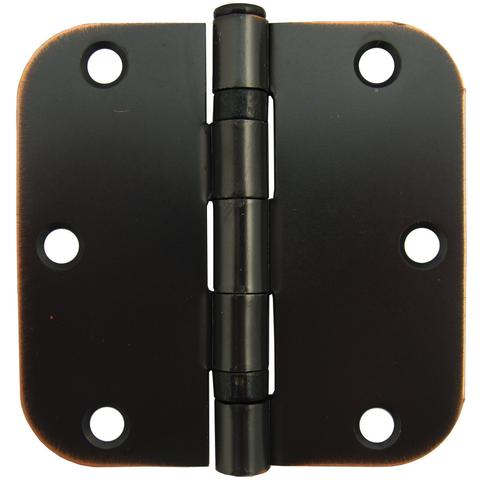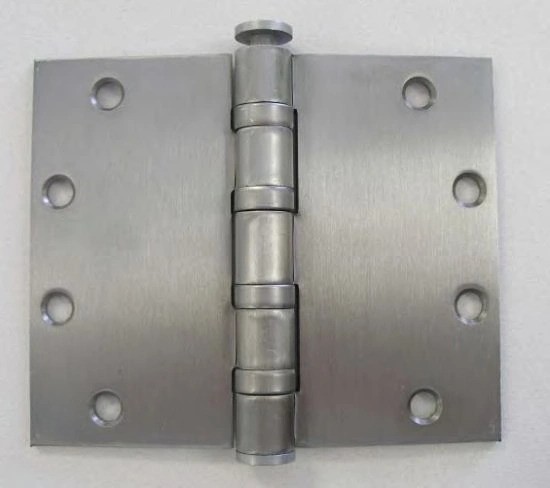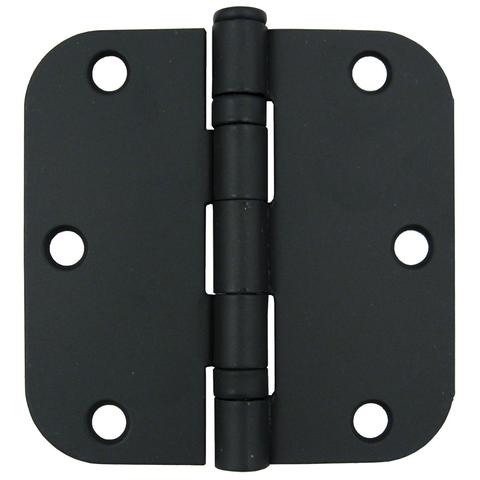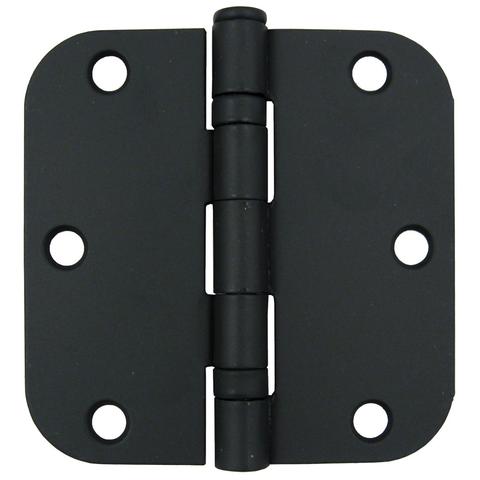Mistakes to Avoid When Installing Door Hinges
Installing a residential hinge incorrectly can cause persistent door problems. Many experience issues like binding or sagging due to loose screws or misaligned hinges.
·Improper screw selection and poor alignment often result in door malfunctions.
Learning how to install door hinges correctly prevents future repairs and maintains smooth operation.
How to Install Door Hinges Without Incorrect Placement
Plaing Hinges Too High or Too Low
Many homeowners struggle with hinge placement when learning how to install door hinges. Placing hinges too high or too low can cause the door to sag or drag on the floor. Proper hinge positioning supports the door’s weight and ensures smooth operation. The following table shows the recommended measurements for standard residential doors:
| Hinge Position | Distance from Edge |
|---|---|
| Top Hinge | 5 to 7 inches |
| Bottom Hinge | 10 to 11 inches |
| Middle Hinge | Equidistant between top and bottom hinges |
Correct placement prevents unnecessary stress on the hinges and frame.
Not Measuring Properly Before Marking
Accurate measurements are essential for anyone who wants to know how to install door hinges correctly. Even a small error can lead to misaligned hinges and a door that does not close properly. To achieve precise results, professionals recommend using the following tools:
·Measuring tape
·Ruler
·Calipers
These tools help mark exact locations and avoid costly mistakes.
Failing to Account for Door and Frame Clearance
Ignoring door and frame clearance often leads to operational problems. Incorrect hinge placement can cause doors to drag, not close properly, and even damage the frame or hinges over time. Misaligned hinges create excessive stress, which shortens the lifespan of both the door and hardware. Always check clearances before final installation to ensure the door swings freely and closes securely.
How to Install Door Hinges Using the Right Screws
Choosing Screws That Are Too Short or Too Long
Selecting the correct screw length is essential for a secure hinge installation. Screws that are too short can cause the door to wobble or even detach over time. On the other hand, excessively long screws may damage the door frame, weakening the structure and reducing security. The right screw size ensures the hinge stays firmly attached, maintaining both stability and alignment. The following table outlines industry standards for screw length and type based on door material:
| Door Type | Screw Type | Screw Size |
|---|---|---|
| Standard wood doors | #9 or #10 flat head screws | 1" to 1-1/4" |
| Metal doors/frames | Machine screws | Sized to hinge hole pattern |
| General advice | Use all screw holes | To maintain structural integrity |
Mixing Up Screw Types or Materials
Using the wrong screw material can lead to premature failure or corrosion. Different materials offer unique benefits:
·Stainless Steel: Highly resistant to rust and corrosion, ideal for outdoor doors.
·Brass: Provides a decorative finish and resists corrosion, suitable for indoor use.
·Hardened Steel: Delivers exceptional strength and durability, best for heavy-duty applications.
Choosing the right material helps prevent rust and ensures the hinge lasts as long as the door.
Not Using Long Enough Screws for Security
For exterior doors, security depends on screw length. Short screws do not anchor deeply enough into the frame, making forced entry easier. Professionals recommend using #10 x 3-inch screws for heavy exterior doors. Replacing standard screws with 3-inch wood screws allows the hinge to anchor into the door jamb stud, reinforcing the entire assembly. Anyone learning how to install door hinges should prioritize longer screws for exterior applications to maximize safety.
How to Install Door Hinges with Proper Alignment

Misaligned Hinges Causing Door Binding
Misaligned hinges often lead to door binding, which restricts smooth movement and increases friction. When hinges do not line up correctly, the door may stick or fail to close properly. Several factors contribute to misalignment, including poor mortising, environmental changes, and wear over time. The following table highlights frequent alignment errors and their impact on door operation:
| Alignment Error | Description |
|---|---|
| Misalignment of hinges | Hinges not lined up correctly can cause doors to swing improperly, leading to increased friction. |
| Incorrect drilling | Using the wrong drill bit or improper drilling angles can negatively affect hinge functionality. |
| Neglecting clearance | Failing to account for thermal expansion can result in binding, affecting door operation. |
| Poor hinge security | Insufficient or incorrect hinges can lead to sagging doors, especially in high-use environments. |
Proper alignment remains essential for anyone learning how to install door hinges, as it prevents binding and extends the life of the hardware.
Not Checking for Level and Plumb
Checking for level and plumb ensures the door operates smoothly and does not bind. Professionals use several methods to verify alignment:
1.Attach a door level to the slab to check both level and plumb.
2.Use a 2-foot or 6-foot level to inspect the head jamb and jambs.
3.Apply shimming techniques by sliding shims until the level reads plumb.
They also check the unit for plumb at both internal and external jambs, confirm the head jamb and sill for level, and measure diagonally for square. These steps help maintain proper hinge alignment and prevent operational issues.
Skipping the Use of Installation Jigs
Installation jigs offer significant advantages in hinge alignment accuracy. Many jigs are simple, durable, and versatile, making them valuable tools for professionals. However, design flaws or the need for multiple jigs can sometimes cause misalignment or inconvenience. Despite these drawbacks, using a quality jig can streamline the process and improve results, especially for those who want to know how to install door hinges with precision.
How to Install Door Hinges with Correct Screw Tightening
Stripping Screw Heads or Threads
Many installers encounter stripped screw heads or threads when they use excessive force or the wrong tools. Stripped screws make future adjustments difficult and weaken the hinge’s hold. To prevent this issue, professionals recommend using a screwdriver or drill with a clutch setting. This tool helps control torque and avoids over-tightening.
Tip: Always match the screwdriver bit to the screw head to reduce slippage.
Torque specifications play a crucial role in preventing damage. For example, tightening screws to 27 Nm (19.9 lbs-ft) for the LH front upper door hinge ensures a secure fit without stripping. Some manufacturers suggest tightening screws to 42 N·m (31 ft. lbs) for heavy-duty hinges. Following these guidelines helps maintain the integrity of both the screw and the hinge.
Leaving Screws Too Loose
Loose screws can cause hinges to shift, resulting in misalignment and door sagging. When screws lack proper tension, the door may creak or fail to close smoothly. Installers should check each screw for tightness after installation.
·Use a torque wrench to achieve the recommended specification.
·Inspect the hinge for movement by gently wiggling the door.
A secure hinge relies on consistent screw tension. Those learning how to install door hinges should always verify that each screw is snug but not overtightened. This practice extends the life of the hardware and prevents unnecessary repairs.
How to Install Door Hinges by Pre-Drilling Holes

Splitting the Wood
Pre-drilling holes prevents wood from splitting during hinge installation. Many installers overlook this step, which leads to cracks and weakens the door frame. He should select a drill bit that matches the screw diameter. This choice reduces stress on the wood fibers.
Tip: Always drill pilot holes before inserting screws. This practice protects the integrity of the wood and ensures a secure fit.
Installers often use a depth stop on the drill to avoid drilling too deep. They should position the drill perpendicular to the surface. This technique keeps the hole straight and prevents accidental damage.
A simple checklist for preventing wood splitting:
·Choose the correct drill bit size.
·Drill pilot holes at each screw location.
·Use a depth stop for consistent hole depth.
·Keep the drill steady and straight.
Making Holes That Are Too Large or Small
Incorrect hole size causes problems during hinge installation. If the hole is too large, the screw will not grip the wood securely. If the hole is too small, the screw may split the wood or become difficult to drive.
Installers should match the drill bit size to the screw’s core diameter. The following table helps select the right bit:
| Screw Size | Recommended Drill Bit Size |
|---|---|
| #8 | 7/64 inch |
| #10 | 1/8 inch |
| #12 | 9/64 inch |
He should test the fit by inserting the screw into a scrap piece of wood. This step confirms the hole size before working on the actual door.
Note: Accurate pilot holes improve screw grip and prevent hinge movement over time.
How to Install Door Hinges and Check Door Swing
Door Not Opening or Closing Properly
Many installers encounter problems when a door fails to open or close smoothly after hinge installation. He should always test the door swing before finalizing the project. If the door sticks or rubs against the frame, the hinges may not align correctly. She can use a simple checklist to identify the cause:
·Check hinge alignment with a level.
·Inspect for obstructions in the frame.
·Confirm that all screws are tight.
A door that does not operate as intended often signals an error in hinge placement or alignment. They should open and close the door several times to ensure consistent movement. If resistance occurs, adjusting the hinge position may resolve the issue.
Tip: Testing the door swing early helps prevent costly repairs and ensures a professional finish.
Ignoring Floor and Frame Clearance
Floor and frame clearance play a critical role in successful hinge installation. He must measure the gap between the door and the floor to avoid scraping or binding. She should also check the clearance between the door edge and the frame. Insufficient space can cause the door to jam or damage the finish. The following table outlines recommended clearances for standard installations:
| Clearance Type | Recommended Measurement |
|---|---|
| Floor Clearance | 1/8 inch |
| Frame Clearance | 1/16 inch |
They should verify these measurements before securing the hinges. Learning how to install door hinges includes understanding the importance of proper clearance.
Note: Adequate clearance ensures the door operates smoothly and prevents long-term damage.
If hinges aren’t measured correctly, you might end up with doors that sag or don’t close properly.
Accurate measurement of hinge locations ensures the door fits and operates smoothly. They should use proper screws, pre-drill holes, and align hinges with care. Testing door swing and clearance prevents future issues.
Quick Installation Checklist:
1.Measure and mark hinge locations.
2.Use correct screws and pre-drill.
3.Align hinges and check level.
4.Tighten screws.
5.Test door swing and clearance.
FAQ
What tools help achieve accurate hinge placement?
A carpenter’s square, measuring tape, and a quality installation jig help ensure precise hinge placement. These tools reduce errors and improve door function.
How can someone prevent hinge screws from loosening over time?
He should use longer screws and check tightness regularly. Thread-locking adhesive can also help keep screws secure in high-traffic areas.
Should a person replace old hinges when installing a new door?
Yes. New hinges provide better support and match the door’s finish. Old hinges may not align or function properly with a new door.
Related articles
-

How Various Types of Hinges Can Improve Your Projects
Choosing the right types of hinges boosts durability, function, and style for doors, cabinets, and furniture projects.Sep-12-2025 Learn More >> -

Smart Tips for Maximizing Home Security with Door Hinges
Boost home safety with security door hinges. Learn key features, installation tips, and upgrades to protect entryways from forced entry and tampering.Sep-12-2025 Learn More >> -

Why Do Black Cabinet Hinges Fit Every Home
Black cabinet hinges fit every home by blending with any style, offering durability, and making cabinets easy to maintain.Sep-12-2025 Learn More >>
To Provide You with Better Service

Contact
Tel: +8613325838282
Add: 6265 Providence Way Eastvale,CA 92880




